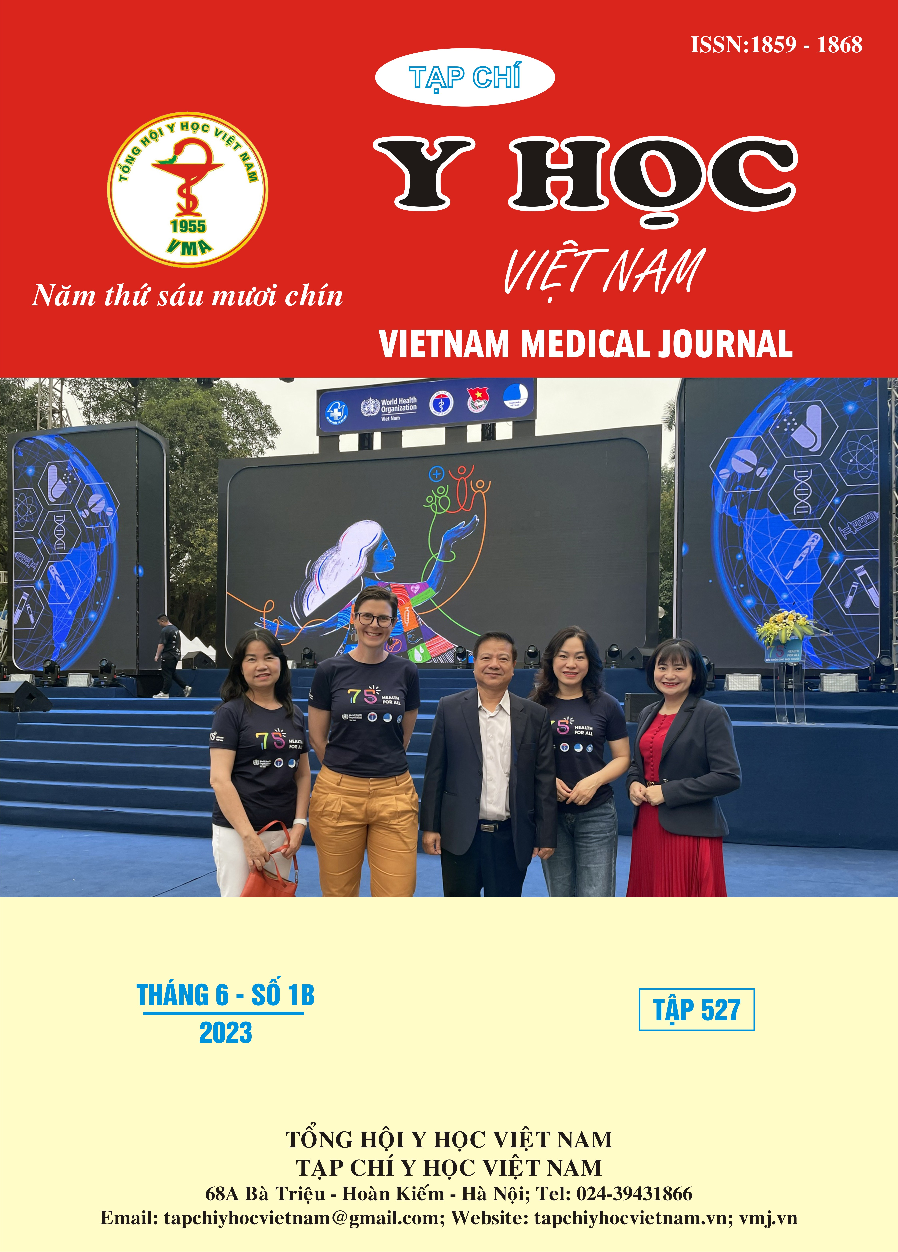AN INITIAL DETERMINATION OF THE INCIDENCE OF COMMON SINONASAL ANATOMIC VARIANTS IN MSCT OF 200 PATIENTS WITH CHRONIC RHINOSINUSITIS IN HANOI MEDICAL UNIVERSITY HOSPITAL
Main Article Content
Abstract
Purpose: To determine the incidence of common sinonasal anatomic variants in MSCT of patients with chronic rhinosinusitis. Material and methods: A descriptive, prospective and retrospective study of 200 patients with chronic rhinosinusitis had performed MSCT at the Radiology Center of Hanoi Medical University Hospital. Result: 63,5% of patients had abnormal nasal septum, deviated septum encountered in all patients, according to Mladina's classification, type I accounted for the highest incidence with 25,2%, followed by type III, II, VII and V was found in 18,9%, 17,3%, 16,5% and 15%, respectively. Anatomical variation of the turbinate was found in 54.5%, in which the concha bullosa was the most common. The most common anatomical variation of the uncinated process was uncinate process pneumatization with 7%. Haller cells are found in 46% of patients, the average size of Haller cells on the right is 4.89mm and on the left is 5.04mm. Agger nasi cells are found in 85% of patients, the average size of right agger nasi cells is 6.38mm and left side is 6.59mm. The average size of the right ethmoidal bulla is 8.9mm, the left one is 9.32mm. Obstruction of the osteomeatal complex was found in 76.5% of patients, the most common location was the maxillary sinus canal, followed by the ethmoid funnel. Conclusion: By studying 200 patients with chronic rhinosinusitis, the result showed the most frequent sinonasal anatomic variants were Onodi cells, followed by Agger Nasi cells and septal nasal deviation.
Article Details
Keywords
sinonasal anatomic variants, sinonasal MSCT
References
2. Shpilberg KA, Daniel SC, Doshi AH, Lawson W, Som PM. CT of Anatomic Variants of the Paranasal Sinuses and Nasal Cavity: Poor Correlation With Radiologically Significant Rhinosinusitis but Importance in Surgical Planning. AJR Am J Roentgenol. 2015; 204(6):1255-1260. doi:10.2214/AJR.14.13762
3. Deutschmann MW, Yeung J, Bosch M, Lysack JT, Kingstone M, Kilty SJ, Rudmik LR. Radiologic reporting for paranasal sinus computed tomography: a multi-institutional review of content and consistency. The Laryngoscope. 2013;123(5):1100-1105. doi: 10.1002/lary.23906
4. Azila A, Irfan M, Rohaizan Y, Shamim AK. The prevalence of anatomical variations in osteomeatal unit in patients with chronic rhinosinusitis. Med J Malaysia. 2011;66(3):191-194.
5. Sam A, Deshmukh PT, Patil C, Jain S, Patil R. Nasal Septal Deviation and External Nasal Deformity: A Correlative Study of 100 Cases. Indian J Otolaryngol Head Neck Surg. 2012; 64(4):312-318. doi:10.1007/s12070-011-0311-x
6. FADDA GL, ROSSO S, AVERSA S, PETRELLI A, ONDOLO C, SUCCO G. Multiparametric statistical correlations between paranasal sinus anatomic variations and chronic rhinosinusitis. Acta Otorhinolaryngol Ital. 2012;32(4):244-251.
7. Khanobthamchai K, Shankar L, Hawke M, Bingham B. The secondary middle turbinate. J Otolaryngol. 1991;20(6):412-413.
8. Stallman JS, Lobo JN, Som PM. The Incidence of Concha Bullosa and Its Relationship to Nasal Septal Deviation and Paranasal Sinus Disease. Am J Neuroradiol. 2004;25(9):1613-1618.
9. Junior FVA, Rapoport PB. Analysis of the Agger nasi cell and frontal sinus ostium sizes using computed tomography of the paranasal sinuses. Braz J Otorhinolaryngol. 2013;79(3):285-292. doi:10.5935/1808-8694.20130052
10. Mathew R, Omami G, Hand A, Fellows D, Lurie A. Cone beam CT analysis of Haller cells: prevalence and clinical significance. Dentomaxillofacial Radiol. 2013;42(9):20130055. doi:10.1259/dmfr.20130055


